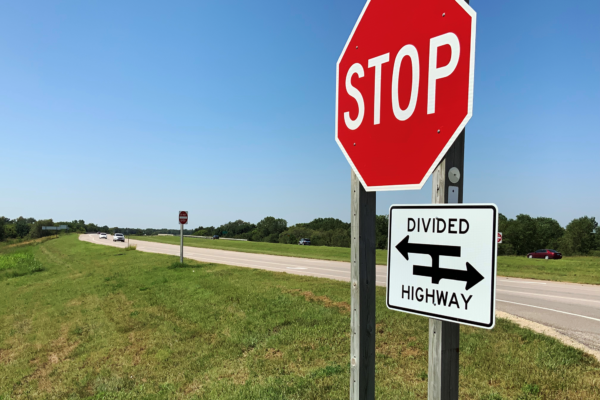Signal Design and ITS
Planning Signalized Intersections and Intelligent Transportation Systems
Garver has developed plans for hundreds of signalized intersections throughout the region, so we are familiar with the preferences of various states. Garver's traffic signal designs include new traffic signal installation, traffic signal replacements, temporary traffic signal plans, and traffic signal modification plans. Special features on some of our projects have included pre-emption for fire stations or railroads, signal-ahead signs with flashing beacons, and phasing overlaps. Typical signal design includes a design phase, preliminary plans, and final plans.
At intersections where left-turn lanes exist or are warranted, the need for protected left turns versus permitted left turns is determined. Where protected left turns are not needed, the intersection generally functions more efficiently with only permitted left turns. Commonly used criteria, such as minimum left-turn volumes or the cross-product rule, are used to establish this need.
Garver uses Synchro software to determine level of service and verify the signal will operate adequately. In addition to providing us with the operational information, we frequently test signal settings and phasing strategies in Synchro/SimTraffic software for both isolated and coordinated intersections. With this capability, we have developed coordinated time-of-day signal-timings for busy urban corridors. The before and after comparisons have resulted in favorable outcomes to our clients.
Through our coordination of signal systems, via radio or fiber-optic interconnect, our traffic team has gravitated toward intelligent transportation systems (ITS), which improves safety and relieves congestion along roadways. ITS covers a broad range of communication-based systems. Garver has designed dynamic message signs, fixed and pan/tilt/zoom (PTZ) cameras, radar detection, and fiber-optic cable. Garver has ITS experience with the following infrastructure: arterial management, safety, work zones, and central server communications.













Share this article